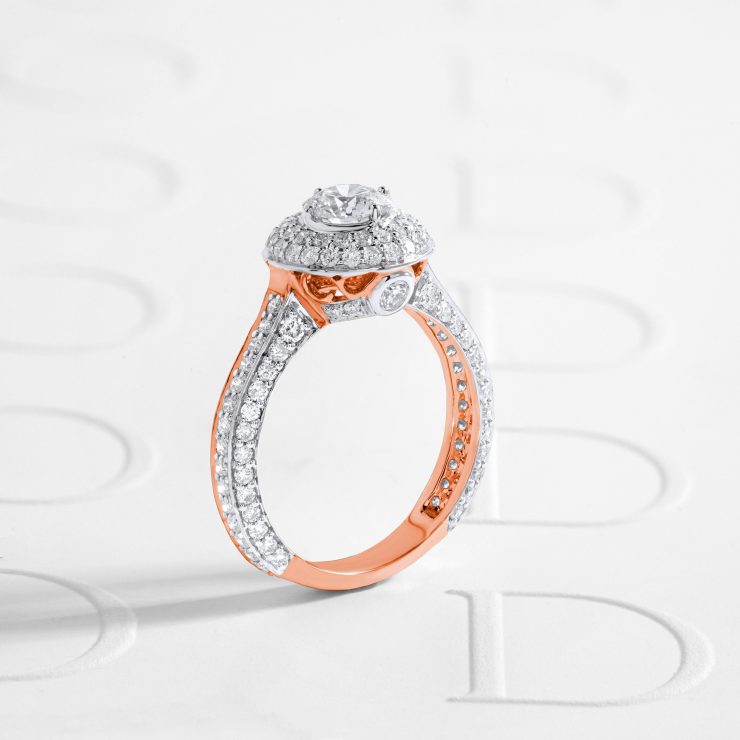Understanding the Distinction Between Natural and Lab-Grown Diamonds in Legal Contexts
The first and most fundamental legal consideration when selling lab-grown diamonds is recognizing and clearly delineating the differences between lab-grown and natural diamonds under both commercial and consumer protection laws. While lab-grown diamonds are chemically, physically, and optically identical to natural diamonds, the method of creation—either through High Pressure High Temperature (HPHT) or Chemical Vapor Deposition (CVD)—results in legal obligations to ensure full transparency in marketing and labeling. Various regulatory agencies around the world, including the U.S. Federal Trade Commission (FTC), the UK’s Advertising Standards Authority (ASA), and the European Union’s consumer law frameworks, require sellers to clearly disclose that lab-grown diamonds are not mined from the earth. The term “diamond” can legally refer to lab-grown gems, but only if accompanied by an appropriate qualifier such as “laboratory-created,” “synthetic,” or “man-made.” Failure to properly disclose this information can result in fines, legal action for deceptive trade practices, or reputational damage. Compliance with these definitions is not only critical from a regulatory standpoint but also a key factor in maintaining consumer trust and industry credibility.

Regulatory Guidelines and Advertising Standards
Legal compliance when selling lab-grown diamonds also extends deeply into advertising, marketing, and promotional materials. For instance, the FTC revised its Jewelry Guides in 2018 to allow the use of the term “diamond” for lab-grown diamonds as long as the context makes it clear that the product is not natural. However, using ambiguous terms such as “real,” “genuine,” or “natural” without further explanation can lead to misleading advertising claims and regulatory scrutiny. Sellers must be acutely aware of country-specific rules; in the UK, ASA mandates that any reference to synthetic diamonds must be clear and unambiguous to prevent consumer confusion. In the EU, Directive 2005/29/EC on Unfair Commercial Practices prohibits misleading statements in B2C (business-to-consumer) transactions, which means that vague or deceptive descriptors of origin can result in sanctions. Moreover, companies marketing internationally must understand that what is permissible in one jurisdiction may be legally unacceptable in another. Therefore, businesses should consult legal experts to review all customer-facing material, including websites, brochures, and in-store displays, to ensure compliance with all relevant advertising and trade regulations.
Labeling Requirements and the Role of Certification
Another important area of legal compliance involves the proper labeling and certification of lab-grown diamonds. Regulations typically require that sellers provide clear labeling at the point of sale, both online and offline, to indicate that a diamond is lab-grown. These labels must be conspicuous, not buried in fine print or difficult to understand. In jurisdictions such as the U.S. and Canada, mislabeling lab-grown diamonds as natural diamonds can be treated as fraud, with legal penalties ranging from financial fines to business license revocation. In the U.S., the FTC also requires that sellers must avoid implying that lab-grown diamonds are rare or unique in the same way as natural diamonds, as doing so constitutes a misleading commercial practice. Equally important is the role of third-party certification bodies such as the International Gemological Institute (IGI) and the Gemological Institute of America (GIA), which now provide grading reports specifically tailored for lab-grown diamonds. These reports distinguish between natural and synthetic stones and include information on growth methods and treatments. Offering certified documentation not only supports compliance but also enhances customer confidence, making it a legal and strategic best practice in the marketplace.
Disclosure Obligations to Consumers and Retail Partners
Disclosure is one of the most emphasized legal responsibilities when selling lab-grown diamonds. This applies not only to end consumers but also to intermediaries such as wholesalers and retail partners. In many jurisdictions, consumer protection laws mandate that all relevant product attributes be disclosed prior to purchase, including whether the diamond is lab-grown, its method of synthesis, and any post-growth treatments (e.g., color enhancements). Retailers who rely on third-party suppliers must perform due diligence to verify the authenticity and description of the diamonds they receive. Failure to do so may result in joint liability in the case of consumer deception. It is also advisable for contracts between suppliers and retailers to include specific clauses about the origin and certification of lab-grown diamonds, ensuring that all parties are legally protected. In legal disputes involving consumer claims, the burden often falls on the seller to prove adequate disclosure was made at the point of sale. Therefore, businesses should consider integrating digital disclosure tools, like clickable pop-ups or downloadable certificates, into their e-commerce platforms to document transparency. Clear, verifiable disclosures mitigate legal risk and align with global standards of ethical business practice.

International Trade Laws and Import/Export Compliance
When dealing in lab-grown diamonds across borders, businesses must navigate a complex web of international trade laws and customs regulations. Unlike natural diamonds, which fall under the Kimberley Process Certification Scheme (KPCS) to prevent the sale of conflict diamonds, lab-grown diamonds are currently exempt from such controls due to their ethical sourcing. However, this exemption does not mean sellers are free from scrutiny. Many countries, such as the United States, the United Arab Emirates, and members of the European Union, require accurate tariff classifications and country-of-origin declarations on import documentation. Misrepresentation can result in shipment seizures, penalties, or delays at customs. For example, in the U.S., lab-grown diamonds must be declared under Harmonized Tariff Schedule (HTS) code 7104.90.50, which is different from natural diamonds. Additionally, labeling on packaging during shipping must match declarations made in invoices and manifests. Inaccuracies, even if unintentional, can trigger investigations or damage business relationships with customs brokers and retailers. Companies should also stay current with bilateral trade agreements and free trade zones, which may influence duty rates and documentation requirements for lab-grown gemstones.
Intellectual Property and Patent Considerations in Diamond Manufacturing
While selling lab-grown diamonds may appear to be solely a matter of gem trade, it also intersects significantly with intellectual property (IP) law, particularly regarding the production and branding of synthetic gems. The technologies used to create lab-grown diamonds—especially advanced HPHT and CVD methods—are often protected under patents. Businesses involved in manufacturing or private-label selling must be cautious not to infringe on patented processes or technologies. A seller importing lab-grown diamonds from a third-party manufacturer must verify that the supplier has legitimate rights or licenses to use those patented processes. Several major producers, such as De Beers (through its Lightbox brand), have established significant IP protections that may apply internationally. Infringement, even unwittingly, can result in civil lawsuits, injunctions, or claims of unfair competition. Additionally, businesses should protect their own branding, grading terms, and proprietary designs through trademarks and copyrights. Using unique terms to describe diamond quality or branding should be vetted for legal availability, especially in markets where linguistic nuances could cause confusion with competitors’ marks. Seeking legal counsel with IP expertise is essential when entering or expanding within this fast-developing sector.
Environmental and Ethical Claims: Legal Pitfalls of Greenwashing
One of the biggest marketing appeals of lab-grown diamonds lies in their sustainability, but claiming that these diamonds are environmentally friendly or ethically superior requires a careful legal approach. Regulatory agencies are increasingly cracking down on “greenwashing”—the practice of making deceptive or exaggerated environmental claims. In both the U.S. and EU, any marketing that includes terms like “eco-friendly,” “sustainable,” or “ethical” must be substantiated with objective evidence. For example, the FTC’s Green Guides specifically warn companies not to make broad environmental claims without proper qualifications or certifications. Businesses that claim reduced carbon emissions or ethical sourcing must be prepared to back these statements with verifiable data, third-party audits, or environmental impact reports. Inaccurate or unsubstantiated claims can result in hefty fines and reputational damage. Likewise, asserting that lab-grown diamonds are “conflict-free” should not imply that natural diamonds are inherently conflict-ridden, as this can be interpreted as disparaging comparative advertising. To remain compliant, companies should stick to precise, measurable terms and be transparent about the sourcing of raw materials, energy usage, and labor practices.
Resale, Returns, and Consumer Rights Protections
Another vital but often overlooked legal aspect of selling lab-grown diamonds is the resale and return process, which must comply with consumer protection laws in relevant jurisdictions. Many countries require businesses to disclose their refund and return policies upfront. In the EU, for instance, the Consumer Rights Directive mandates a 14-day “cooling-off” period for online purchases, during which consumers can return items for a full refund. U.S. states have varied laws, but some require clear signage or disclosures if returns are limited or not permitted. In the context of lab-grown diamonds, which may lose value differently than natural diamonds, resale disclosures must also avoid misleading value assumptions. Statements suggesting investment-grade quality, future resale value, or appreciation potential can be considered deceptive if not backed by factual, market-based analysis. Furthermore, any warranties—whether on workmanship, clarity, or grading—must comply with the Magnuson-Moss Warranty Act in the U.S., which requires clear, accessible language outlining consumer rights. Ensuring compliance with these regulations helps protect both the buyer and the seller, reducing the risk of disputes, chargebacks, or negative reviews.